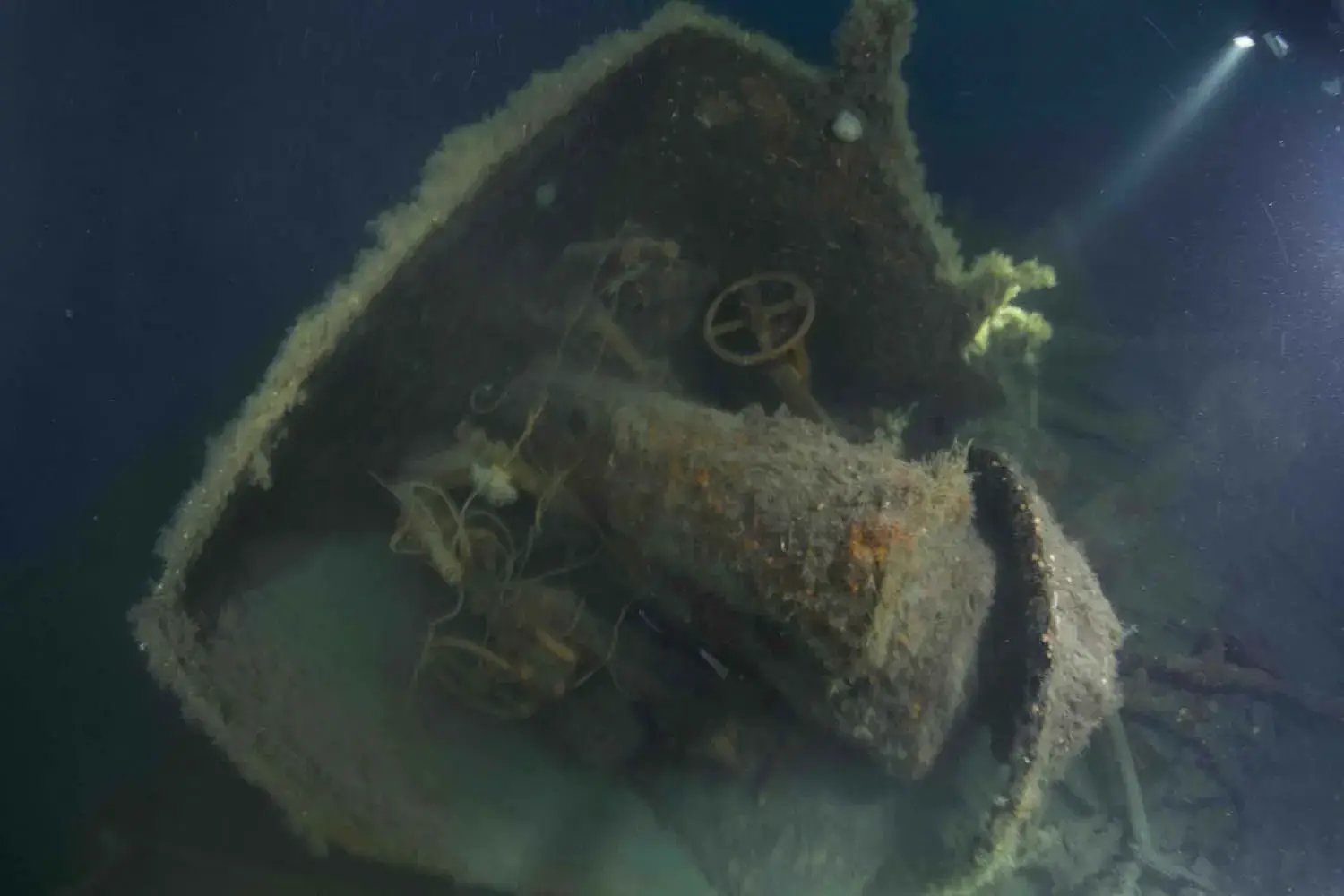Volunteer Divers Find Wreck of WWI Cruiser HMS Hawke
Volunteer divers have found the wreck of the lost British cruiser HMS Hawke, which went down in World War I with the loss of more than 500 lives.
HMS Hawke was an early “protected cruiser” built in 1891-93 at Chatham Dockyard. With a heavily armored main deck, she displaced about 7,400 tonnes, less than a modern destroyer. She carried two nine-inch guns, along with an assortment of smaller guns and torpedo tubes.
Over the course of her career, Hawke deployed to the Mediterranean and South Africa, then transitioned into a training and home guard role in the early 1900s. In late 1911, Hawke collided with the White Star ocean liner Olympic, sister ship of the Titanic. Hawke’s inverted bow was smashed, but she was repaired and returned to service.
In August 1914, Hawke joined the Royal Navy’s operations in the North Sea, enforcing a blockade on German ports and providing convoy protection. On October 15, her squadron was spotted by the German sub U-9 off the coast of Aberdeen. U-9 was notorious, having just sunk the cruisers HMS Aboukir, HMS Hogue, and HMS Cressy on September 22. U-9 hit Hawke with a single torpedo, and the ship capsized and sank, taking 524 officers and crewmembers with her. Only 70 men survived.
U-9’s commanding officer, Kapitanleutnant Otto Weddigen, was awarded Germany’s highest military honor for sinking four British warships in less than a month. Five months later, battleship HMS Dreadnought rammed and sank Weddigen’s sub near Pentland Firth, killing all on board.
In August 2024, a group of civilian divers and researchers who hunt for wrecks around the UK – known as Lost in Waters Deep – finally found the long-lost position of HMS Hawke’s resting place. They began their hunt about one kilometer away from a charted obstruction in the North Sea, and they used the sidescan sonar on their search vessel to examine the seabed.
The sonar return from the wreck matched the dimensions and layout of Hawke, so a dive team descended to the 350-foot depth of the seabed to have a closer look. This depth is beyond the reach of most recreational divers, and the team found that the wreck was untouched. They found intact teak decking and a variety of crockery and other debris sitting out in the open, a sign that the vessel had not been scavenged.
 Courtesy Lost in Waters Deep / Royal Navy
Courtesy Lost in Waters Deep / Royal Navy
They took measurements and photographs to verify the identity of the site, leaving all items from the protected war grave behind. The Royal Navy announced last week that it has confirmed the find as HMS Hawke.
“A huge amount of effort went into the research behind this project, so we knew we were searching in the right area – but until divers go down and visually ID the wreck, you can never be 100 per cent sure,” said Kevin Heath, who runs Lost in Waters Deep. “It was such a relief when the divers surfaced and reported they had found a wreck with guns; I knew it had to be HMS Hawke.”